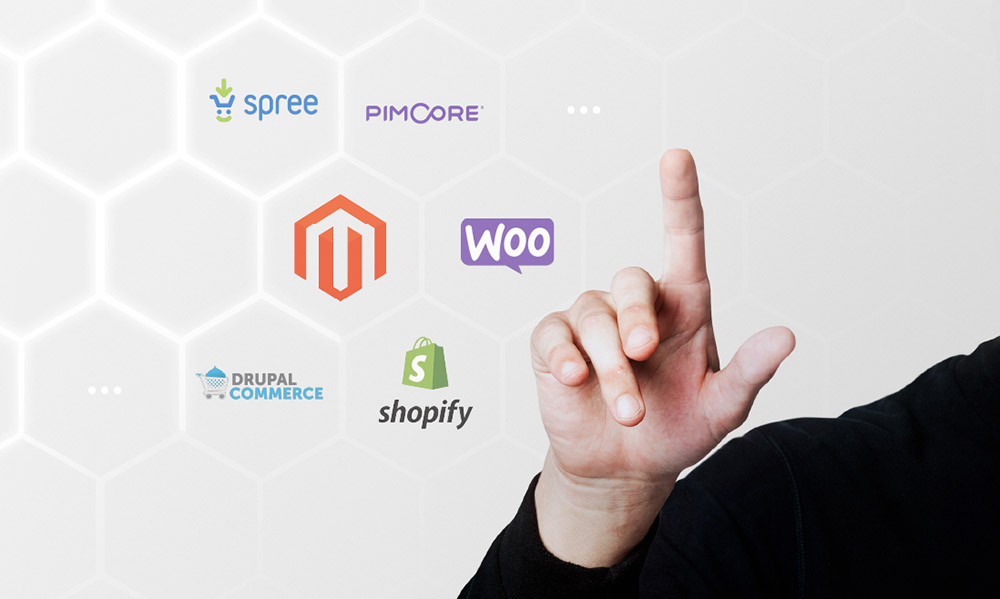Many years have passed since the concept of website development for eCommerce was first introduced. Today, we are witnessing a surge in the popularity of online stores, where almost anything can be purchased after a few clicks.
As online shopping becomes more popular, the need for an eCommerce website also increases. Yet, if you still have trouble getting started, this guide will provide you with a step-by-step approach to this hot topic. Scroll down to learn more!
Contents
Step 1: Pick A Platform

Just like a home requires a foundation, websites do not appear out of nowhere. The first thing you need is a platform to launch them. Usually, you can use either a Monthly payment platform (Hosted) or an Open-source platform (Self-hosted).
Hosted eCommerce platforms often come with the hosting and software needed for website development, but customization is limited. Examples are Shopify, BigCommerce, Wix, Squarespace, and Weebly.
On the other hand, one can modify a website at their own will using a self-hosted platform; yet the aforementioned hosting and software will not be available. In this case, examples are Magento, WooCommerce, Laravel, Drupal, and Joomla.
Both types of platforms have their pros and cons, so consider pricing, scalability, or compatibility factors before making a payment.
Step 2: Register A Domain Name & Buy Hostings
Those who opt for a hosted platform may not need this step since domain names and hosting are usually included in the packages. Yet the following insight is crucial for self-hosted platform owners.
A domain is what customers use to find your website, while a hosting service allows you to store all of your data. So after choosing an e-commerce platform, you have to register your domain name and purchase some hostings.
You also need to consider security and privacy in this context, as you don’t want your domain name or hosting setup to be subverted by third parties. That’s where this guide to using domain privacy protection comes in handy, as it outlines the ins and outs of shielding your newly-minted site from the potential mischief that malicious outsiders might wreak on it.
Step 3: Find Web Developers
This is the most critical step in website development for eCommerce.
Unless you have a website development background or your team consists of web designers, and programmers, you’ll need other people to do the job.
You’ll have two options. The first one is to hire freelance developers and form a team. Make sure everything is unanimous and everyone understands the task so your website won’t look like a mess.
The second option is to hire a web development agency. They are experts in this field, so you only need to provide information and supervise as they build the web for you if chosen carefully.
If you do not have any candidates, then Tigren will be a perfect choice. We’ve got a professional team with 10 years of web development experience. Past clients highly appreciate our services and products.

Step 4: Select Website Theme
A theme is the way your website looks and feels. It includes all the design factors such as headers, footers, page layouts, colors, styles, you name it.
You may choose from available website templates or hire a web designer to create a unique theme from scratch. Bear in mind that the final theme should suit your business. For instance, a fashion company exudes a colorful and creative vibe, while a furniture brand may opt for a minimalistic approach.
Step 5: Add Contents
Once the theme is ready, the next step involves “decorating” your website. Below are the essential features to display on your site:
- Products: Name, status, quantity, price, images, etc.
- Login/Create an account
- Cart page
- Contact info: Contact form, Email, Instagram, Facebook, Twitter, etc.
- Site info: About us, Terms and conditions, Privacy policy, etc.
One thing to look out for is that the site content should blend seamlessly with the theme mentioned above.
Step 6: Finalize Payment And Shipping Process
One feature that distinguishes Internet-based stores from traditional ones is online payment and shipping.
Again, you need to wisely decide your payment process and shopping partner to minimize the incurred costs. For instance, compatibility, availability, currencies, fees, and reliability should be added to your checklist. This saves you from trouble in the future, and customers will also be thankful for the convenience of your services.

Step 7: Start Selling!
You can jump right in and start running your online stores through the website.
For precaution, try running your website on a limited group of customers, willingly receiving their feedback, and using it for future updates and patches.
Also, don’t forget to link the cash flow from your website to your bank account to get paid.
Bonus: Suggested eCommerce Website Trends To Follow
Chatbots
Once a chatbot is incorporated into your website, it will save your staff a lot of time. It’s available 24/7 and instantly replies to your customers’ questions.
PWAs

Progressive Web Apps (PWAs) give users an app-like look and feel. Your customers will indeed have a great and consistent experience.
On the other hand, your ability to stimulate demand will also increase significantly with their outstanding functions. For example, the ease of access from the PWA icon or push notifications encourages users to visit the PWA more often.
Immersive Experience
To put it simply, animations and transitions will be employed to give your customers an immersive shopping experience. Be it a scroll down followed by products popping up from the sides or a GIF cartoon loading screen. Creativity never fails to enthrall people.
Dark Mode
The dark mode is on the rise as it makes looking at the mobile screen less eye-straining, and less white space can enhance the elements on a web or app. Young users usually prefer this mode, especially when shopping on their phones in a low-light environment.
Bottom Line
As the technological era unfolds, everything is “going online” and businesses are no exception.
It stands to reason that website development for eCommerce businesses has been a hot topic for quite some time. This market is competitive; hence, those with the best preparations should reap the ultimate reward.

